“May the beauty of the valley and the hills touch you deeply as you walk gently on this sacred land. And may your imagination soar to new heights … and may you be open to the invitation of transformation that this day offers you.”
Aideen Klauer sets the scene for the group of walkers on St Kevin’s Way in Co Wicklow.
“It’s the only thing we do together,” says Fran Sexton, referring to how she and her brother, Mike, join guided walks around Ireland as a way of remaining connected to each other. From Buttevant in Co Cork, Mike and Fran have joined the group of about 30 people from Wicklow, Kildare, Kilkenny and Dublin to walk the St Kevin’s Way pilgrim path from Laragh to near Hollywood, Co Wicklow, during National Heritage Week recently.
“People talk about how a psychiatrist or a counsellor will tell you to take your problems and put them in a box. But, I like the idea here to bring a small stone to a destination and leave it at the end,” says Mike.
READ MORE
The organisers of St Kevin’s Way walk have asked us to carry an intention stone - symbolising hope, hurt, a burden or a sense of gratitude and lay it in the river at the end of the walk. As my mother died a month earlier, I carry my small stone in her memory, and in gratitude for her long and fulfilled life.
Mike says walking allows him to be in nature and with his thoughts. “You realise that you are a little cog in the wheel of nature on this walk that other people walked hundreds of years ago.”
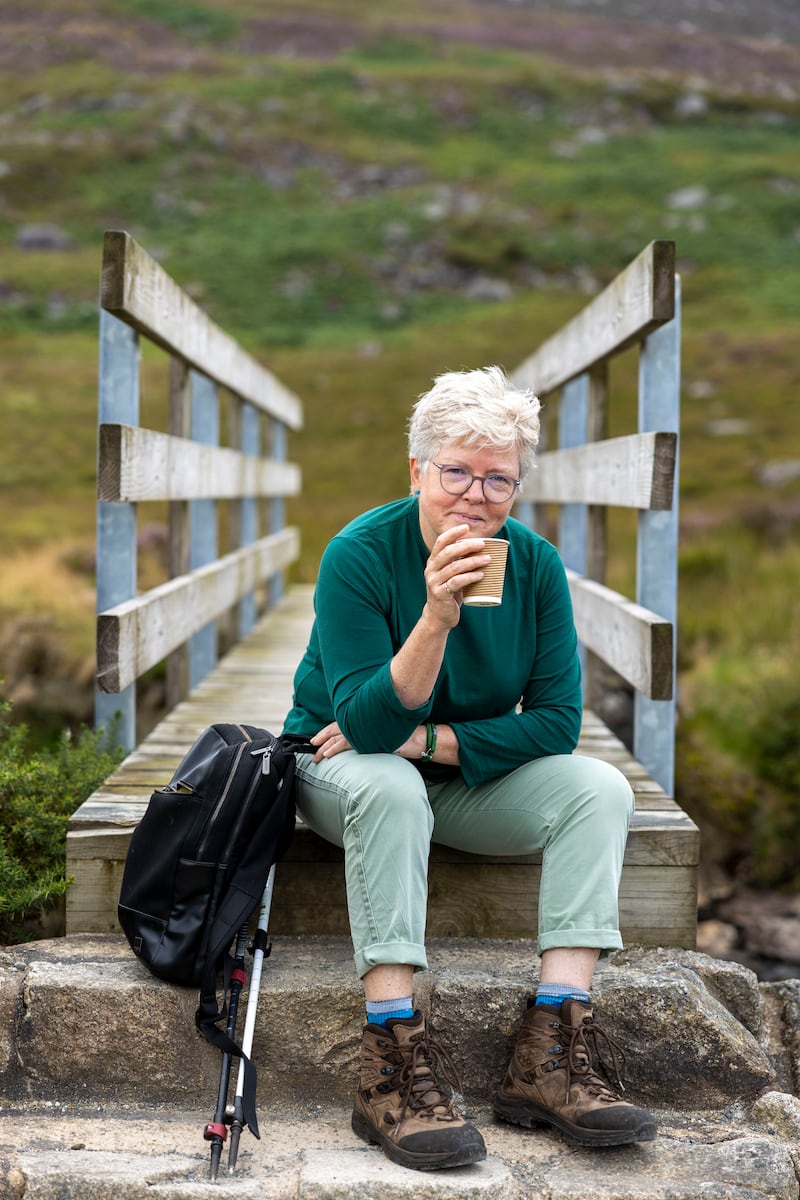
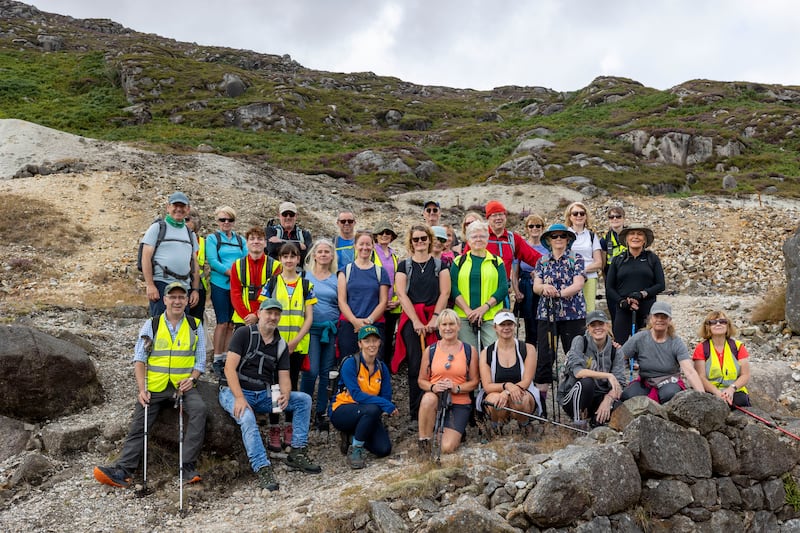
The resurgence of interest in walking Irish pilgrim paths is palpable among this group and others I speak with who have walked St Finbarr’s pilgrim path in Co Cork earlier this summer. “I’m interested in heritage and I like walking. I’ve no problem mixing with people who have a strong faith,” says Annette Glanton from Union Hall in Co Cork. “We had a little reflection every hour but there was no imposition on anyone.”
She joined the St Finbarr’s two-day pilgrimage from Drimoleague to Kealkil and then from Kealkil to Gougane Barra. “I spent most of the time on my own. You can fall into step with other people or be on your own. Spending such a long time in nature leaves you feeling very refreshed. It’s less competitive than other hikes.”
[ Travel The Irish Camino? St Declan’s Way takes in Ireland at a slower paceOpens in new window ]
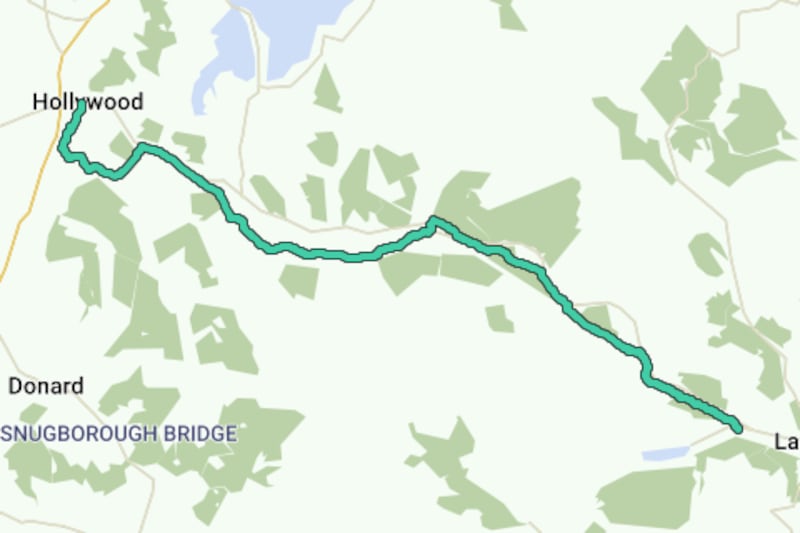
John G O’Dwyer, chairman of Pilgrim Paths Ireland, says that while, historically, pilgrimages were taken to gain religious graces or indulgences for yourself or others, now, they are undertaken for more personal, holistic or cultural reasons. “The journey itself has become the objective, with the sought-after personal renewal coming not so much from the endpoint as from the long walk itself,” he says.
The umbrella body for the voluntary groups promoting Ireland’s medieval pilgrim paths — St Kevin’s Way in Co Wicklow, St Finbarr’s Pilgrim Path in Co Cork, Tochar Phadraig in Co Mayo, Cosan na Naomh and Cnoc na dTobar in Co Kerry and St Declan’s Way in counties Tipperary and Waterford — encourages both local and international groups to walk these spiritual routes.
In medieval times, when religions were less formalised, pilgrimage was an important devotional expression and if as Christians couldn’t journey to Rome or Jerusalem, they could do local pilgrimages to places such as Glendalough, Skellig Michael, Gougane Barra, Croagh Patrick and Lough Derg.
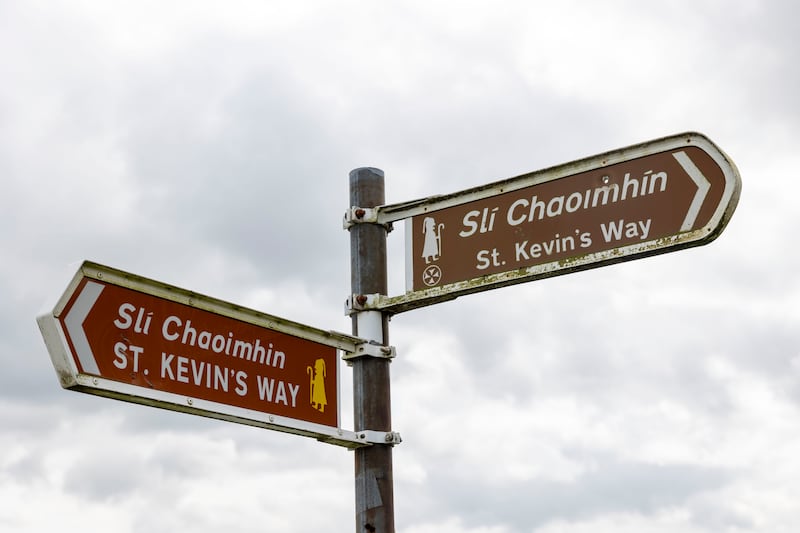
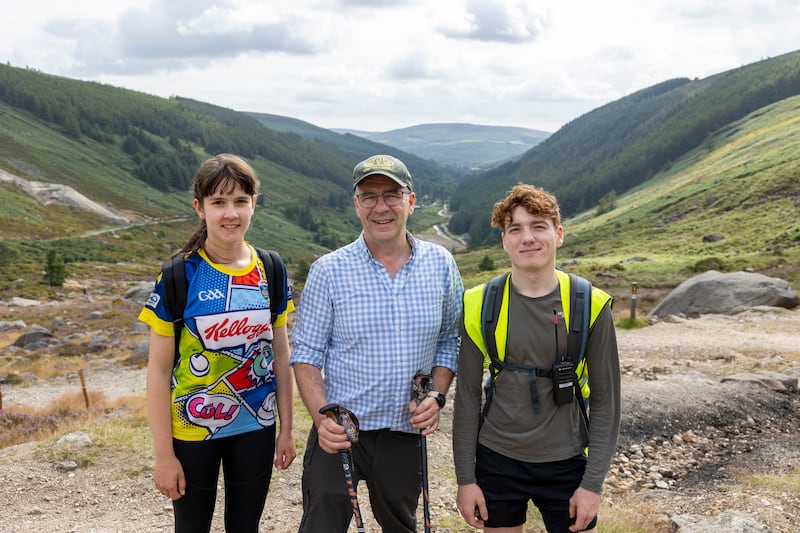
But, through the centuries, the Christian churches began to place more importance on formal in-church worship, leading to the demise of walking as a form of being close to God.
In a post-Covid world, more and more people are gaining sustenance from, and cherishing connections with, friends and family by walking these ancient paths again. Many relish the fact that there is no mobile phone coverage along some of the routes, trusting the guide’s walkie-talkie communication and designated comfort breaks to keep them safe. Many of the walkers also have, or have a wish, to walk the famous Camino routes in northwest Spain.
[ Croagh Patrick’s new pathway: ‘I think I’ll bring my six-year-old next time’Opens in new window ]
Jonas Klauer, whose mother led the reflection at the beginning of the walk, is one of the younger walkers and a regular on St Kevin’s Way. “I’ve met a lot of interesting people who tell me about what is happening in their lives and when they come back again, I ask them how things went for them,” says Jonas, who is in fifth year in secondary school.
Lillian Harney, who is starting secondary school, is with her father, a volunteer with St Kevin’s Way. “It’s nice to be in the mountains and be away from the road,” she says. Her father, Lorcan, an avid hiker, is one of the guides on the walk. “There is a nice bond between people and the scenery is beautiful,” he says.
Sally and Michael Joyce are doing St Kevin’s Way as part of their training for the Spanish Camino in October. “There is a particular significance about doing a local pilgrim path and I’m very interested in the labyrinth which is the symbol of St Kevin’s Way,” says Sally. She explains how labyrinths were inlaid into the floors of ancient cathedrals so people could do local pilgrimages instead of travelling abroad. “Labyrinths are now used in many healing settings — even in prisons — and are used as a form of spiritual meditation.”
Éadaoin Ní Chléirigh describes herself as a “committed atheist” yet she enjoys the open, friendly atmosphere of walking the pilgrim paths. “Anyone who has died is here with us. I think of a friend who has died and my mother. I like the idea of intentionally walking — the sense of movement that we share,” she says.
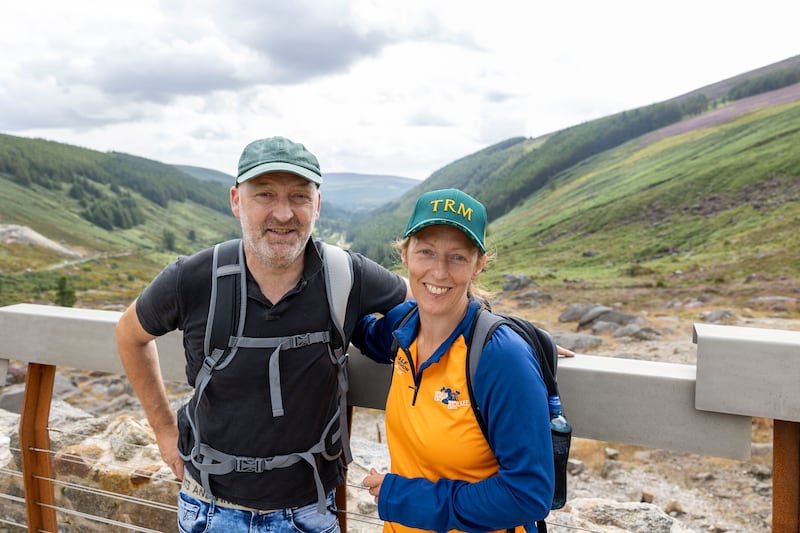
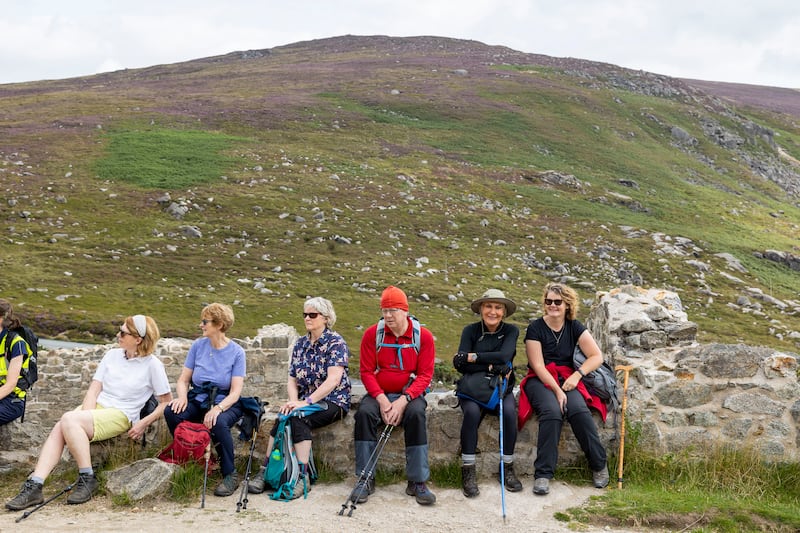
Michael Wylie and Tony Wallace are two friends from Dublin who regularly do a week’s walking along the Camino in Spain. “I think walking there and here reconnects us with our Catholic past. I only go to Mass for weddings and funerals now, but I still believe in God. You experience the goodness of people on these walks,” says Michael.
Tony agrees that the upsurge of interest in walking pilgrim paths brings like-minded people together.
As several walkers wash their feet in St Kevin’s Pool, one can’t but agree that the companionable silence or easy conversation shared among strangers and friends is good for the soul.
I forgot to drop my stone in the stream towards the end of the walk. I guess I wasn’t quite ready to make the transition from the real-life presence of my mother to a time of cherished memories, tinged with that deep sense of loneliness that follows the death of a parent.
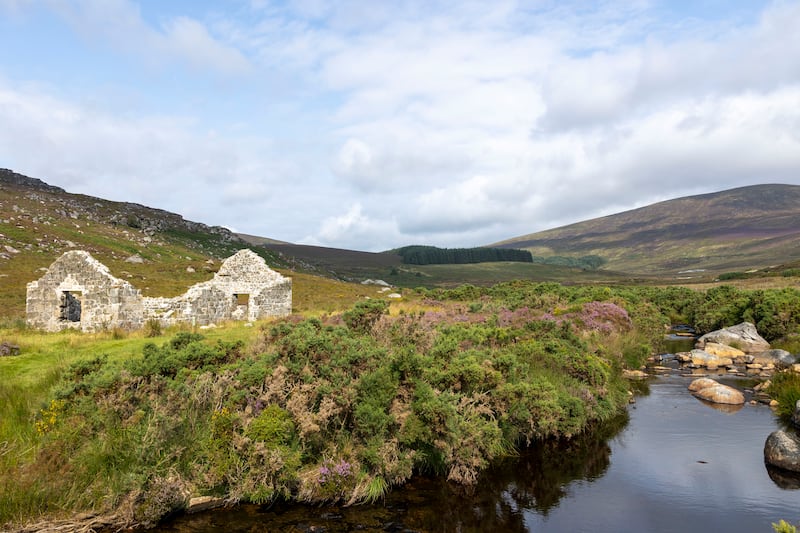
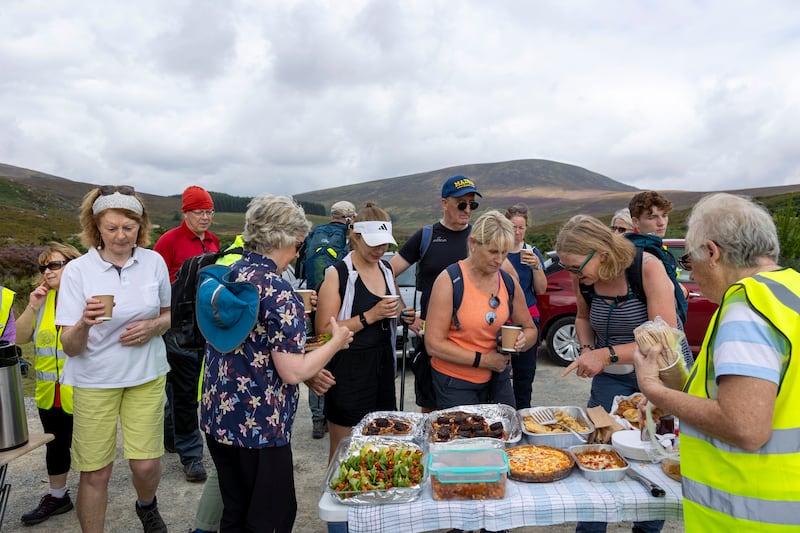
- Sign up for push alerts and have the best news, analysis and comment delivered directly to your phone
- Join The Irish Times on WhatsApp and stay up to date
- Listen to our Inside Politics podcast for the best political chat and analysis














